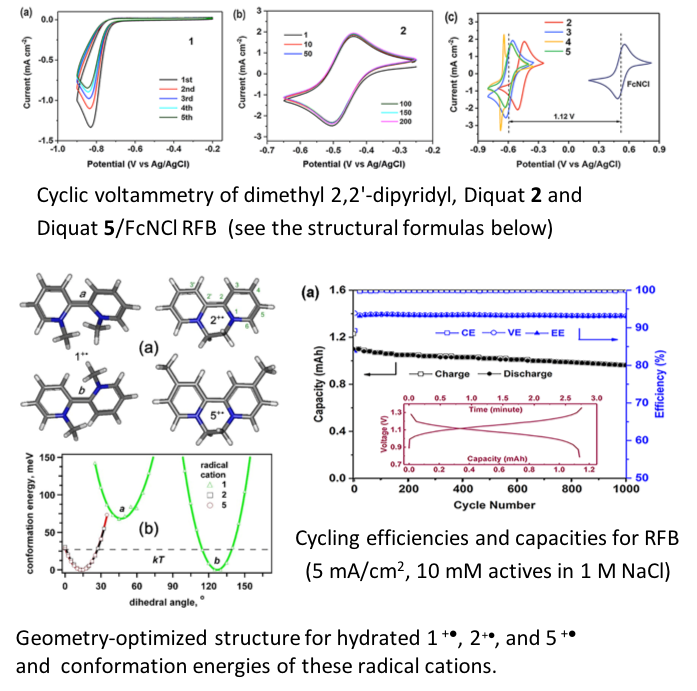
Scientific Achievement
Diquats are shown to be exceptionally stable anolyte (negative charge storing) materials for aqueous redox flow batteries (RFBs) having low redox potentials, extremely stable reduced states, and outstanding electrochemical cycling performance (>1,000 cycles with 0.016% capacity loss per cycle).
Significance and Impact
This research opens new avenues for molecular engineering of redox active molecules in all-organic RFBs. Due to ease of Diquat repurposing as agricultural herbicide, this chemistry enables sustainable and environmentally friendly large-scale cost-effective stationary electrochemical energy storage.
Research Details
- Diquat anolytes paired with ferrocenylmethyl trimethylammonium chloride (FcNCl) enable aqueous redox flow cells that operate with high charge and energy efficiency for 1,000+ cycles.
- Quantum mechanical calculations reveal mechanistic underpinnings of this remarkable stability.
- Large volume production facilities and secondary markets for repurposed Diquat already exist, dramatically slashing full-cycle use costs of this material.

